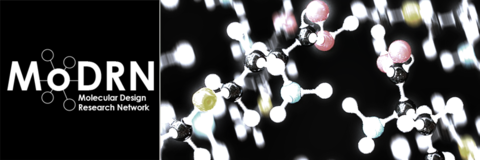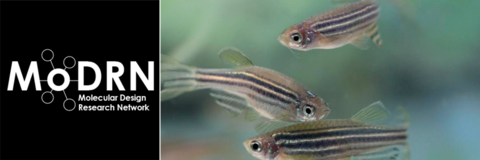Glutathione as a Tool for Testing Gene Function
Introduction: Scientists use many novel molecular techniques with genes since they can provide a more complete view on the development of diseases. Methods such as gene silencing, gene knockout, and gene overexpression allow researchers to study different detoxification pathways at the cellular level. These techniques are used to understand important metabolic pathways, such as glutathione metabolism, which has been identified as one of the body’s first line defenses against chemical-induced oxidative stress. A deeper understanding of these mechanisms allows scientists to develop new generations of chemicals with reduced hazard.
Learning Outcomes: By the end of this module, the student will be able to:
- Describe the difference between gene silencing and gene knockout
- Define gene silencing and gene overexpression
- Describe the antioxidant glutathione and how it protects cells against the reactive oxygen species
Background and Information: Each of our 23,000 genes has a defined and very specific role to perform in the human body. Some genes are responsible for cell growth, others assist with cell division and differentiation, while others help to fight off infection or deal with stress. The roles of genes are complex but necessary for normal function and overall well-being. For many years scientists struggled to understand the complexities of gene regulation. Knowing which genes are responsible for cancer, or which genes can prevent it are key questions that many scientists are trying to answer. To determine the role of a particular gene, scientists use extensive molecular studies and advances in genetic engineering to systematically understand how genes operate. One way to uncover gene function is to decrease or increase the expression of the gene’s product (for example, gene specific messenger RNA) in an in vitro (cell culture) or in vivo (whole organism) experimental system. If gene expression is modified, it may affect the system in a positive or negative way, depending on the cellular biochemical pathways involved. These changes can be monitored and quantified.
Gene silencing – Reducing gene levels in the cell by interfering with gene transcription or translation machinery. When genes are silenced, their mRNA expression is reduced by 70% or more, which is sufficient to impact the change in the in vitro or in vivo system. Gene silencing is a relatively straightforward procedure and it is frequently used when low levels of gene expression are required for an organism to survive. This is in contrast to a gene knockout, where genes are completely removed from the organism’s genome—a procedure which is permanent, time consuming and it cannot be performed on all genes (e.g. genes critical to an organism’s survival). Bearing in mind that common products of normal gene expression are mRNAs, which are translated into proteins unique to each gene, overexpression refers to increasing gene levels by 1, 2 or more fold, depending on the procedure. Increased gene expression frequently contributes to enhancing or improving a certain feature or process in cells. However, in many cases, higher gene expression doesn’t translate into a beneficial outcome. Take cancer for example- overexpression of certain genes, for instance oncogenes, can lead to tumors.
Gene overexpression has been tried with a naturally occurring molecule called glutathione (GSH) made up of the three amino acids: glutamate-cysteine-glycine.

Figure 1. Glutathione - GSH
A small set of enzymes are responsible for the synthesis of GSH which are encoded in the genome of many organisms. GSH is important because it can act as a direct antioxidant in preventing the oxidation of other molecules by giving up electrons. In the process of electron transfer GSH is converted to its oxidized form glutathione disulfide (GSSG).

Figure 2. Oxidized Glutathione - GSSG
The really interesting part in the biological chemistry pertaining to GSH levels in cells is the existence of enzymes that can change oxidized GSSG back to the reduced form GSH. The electrons used to reduce GSSG back to GSH are provided by molecules that efficiently act as electron carriers in cells. This is a reliable and efficient way that cells will recycle and maintain a steady level of GSH and cellular antioxidant defense.

Figure 3. Glutathione Recycling
Glutathione also belongs to a similar group of antioxidant compounds like vitamin C, vitamin A, and vitamin E as well as antioxidant enzymes such as catalase and peroxidases both which help reduce the levels of damage caused by oxidants and chemicals that produce such oxidants. Insufficient levels of antioxidants, or inhibition of antioxidant enzymes can cause oxidative stress and may damage or kill cells. Conversely, an excess (or overexpression) of GSH has been shown to increase cellular resistance to oxidative stress. In other words if cells which overexpress glutathione are exposed to chemicals that cause oxidative stress, these cells are more likely to be resistant to these chemicals. These GSH-enhanced cell lines are frequently used in large toxicology studies, where researchers compare the response of cells to many industrial chemicals. If GSH-overexpressing cells are less sensitive to chemical treatment than healthy cells, chemical toxicity is likely mediated through an oxidative stress related pathway. These tests are designed to determine if chemicals are strong oxidants, what is their toxic potential and to what extent they can compromise cell growth or cause cell death via oxidative stress.
An additional function of GSH is for the detoxification of chemicals. It is conjugated (attached) to many chemicals during a process referred to as phase II metabolism. When toxic chemicals are joined with GSH they become more water soluble and larger in molecular weight (size). These two features are very important in determining the rate at which drugs & toxic compounds are removed from organisms. Phase II metabolism will be covered more in depth in the toxicology module. Using glutathione and other antioxidants are currently an active area of research as you can see by a quick search in the online scientific article database Pubmed (http://www.ncbi.nlm.nih.gov/pubmed). Goto Pubmed.gov and put the term “GSH” in the search query area. How many “hits” did you get?
Assignments:
Assignment #1
Below you will find experimental results for a survival assay conducted on two cell lines [normal and glutathione overexpressing] which were treated with increasing concentrations of a chemical known to cause oxidative stress. As the dose of the chemical increases, cell survival decreases.
- Which cell line probably overexpresses glutathione?
- Why does the survival rate decrease for both cell lines, as the dose of the chemical increases?

Assignment #2
Consider the chemical and physical properties of GSH discussed above. Briefly in 2 to 5 sentences, discuss some strategies you may consider using in trying to design a safer chemical.
Assignment Answer Key found HERE
Click here to evaluate this module.
Resources
- Awasthi, Y. C. (Ed.). (2006). Toxicology of glutathione transferases. CRC Press.
- Sheehan, D., MEADE, G., & FOLEY, V. M. (2001). Structure, function and evolution of glutathione transferases: implications for classification of non-mammalian members of an ancient enzyme superfamily. Biochemical Journal, 360(1), 1-16. Retrieved from http://www.ncbi.nlm.nih.gov/pmc/articles/PMC1222196/pdf/11695986.pdf
- Wang, L., Harris, S. M., Espinoza, H. M., McClain, V., & Gallagher, E. P. (2012). Characterization of phospholipid hydroperoxide glutathione metabolizing peroxidase (gpx4) isoforms in Coho salmon olfactory and liver tissues and their modulation by cadmium. Aquatic toxicology, 114, 134-141.
- Wu, G., Fang, Y. Z., Yang, S., Lupton, J. R., & Turner, N. D. (2004). Glutathione metabolism and its implications for health. The Journal of nutrition, 134(3), 489-492.
This material is based upon work supported by the NSF Division of Chemistry and the Environmental Protection Agency under Grant No. 1339637.









